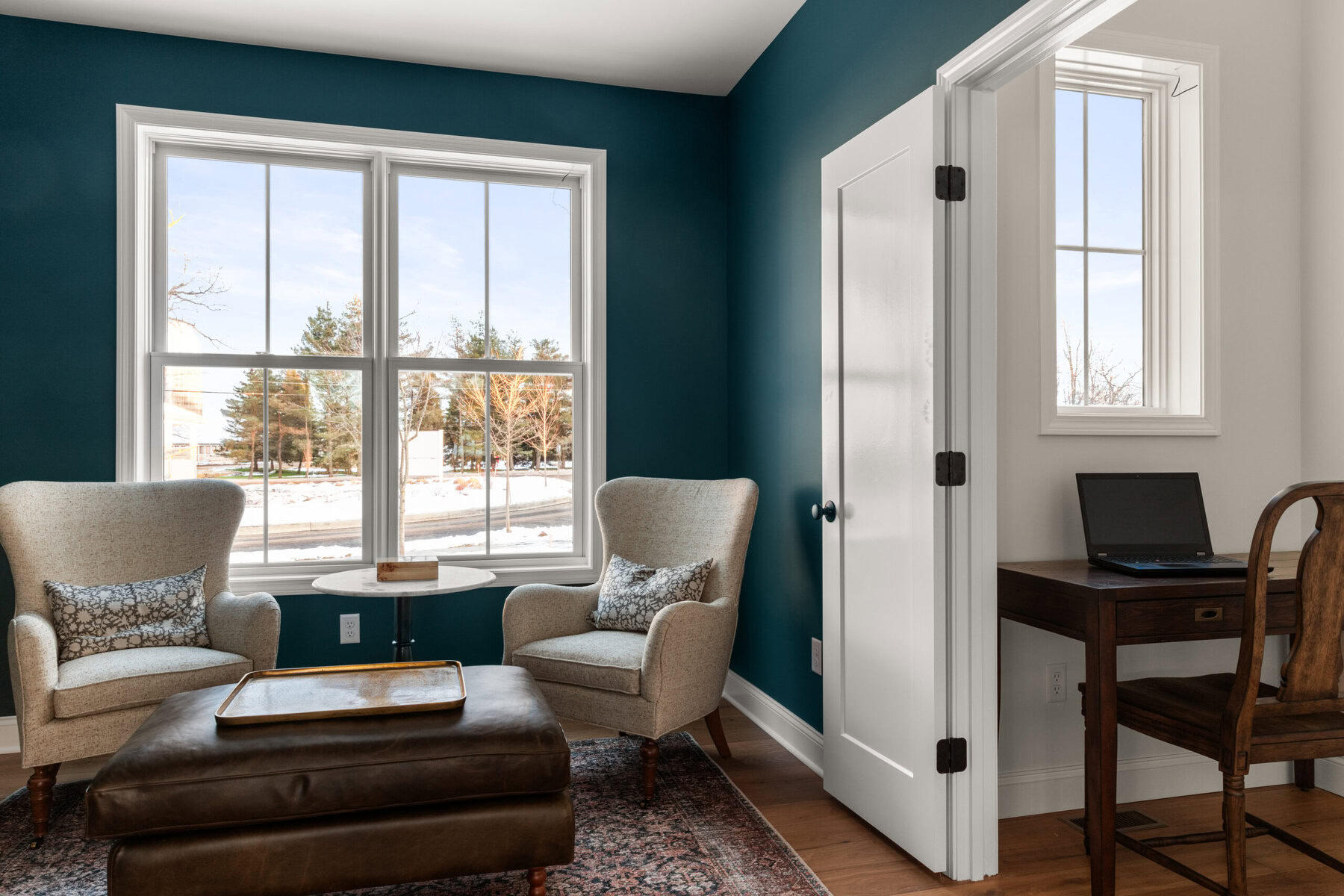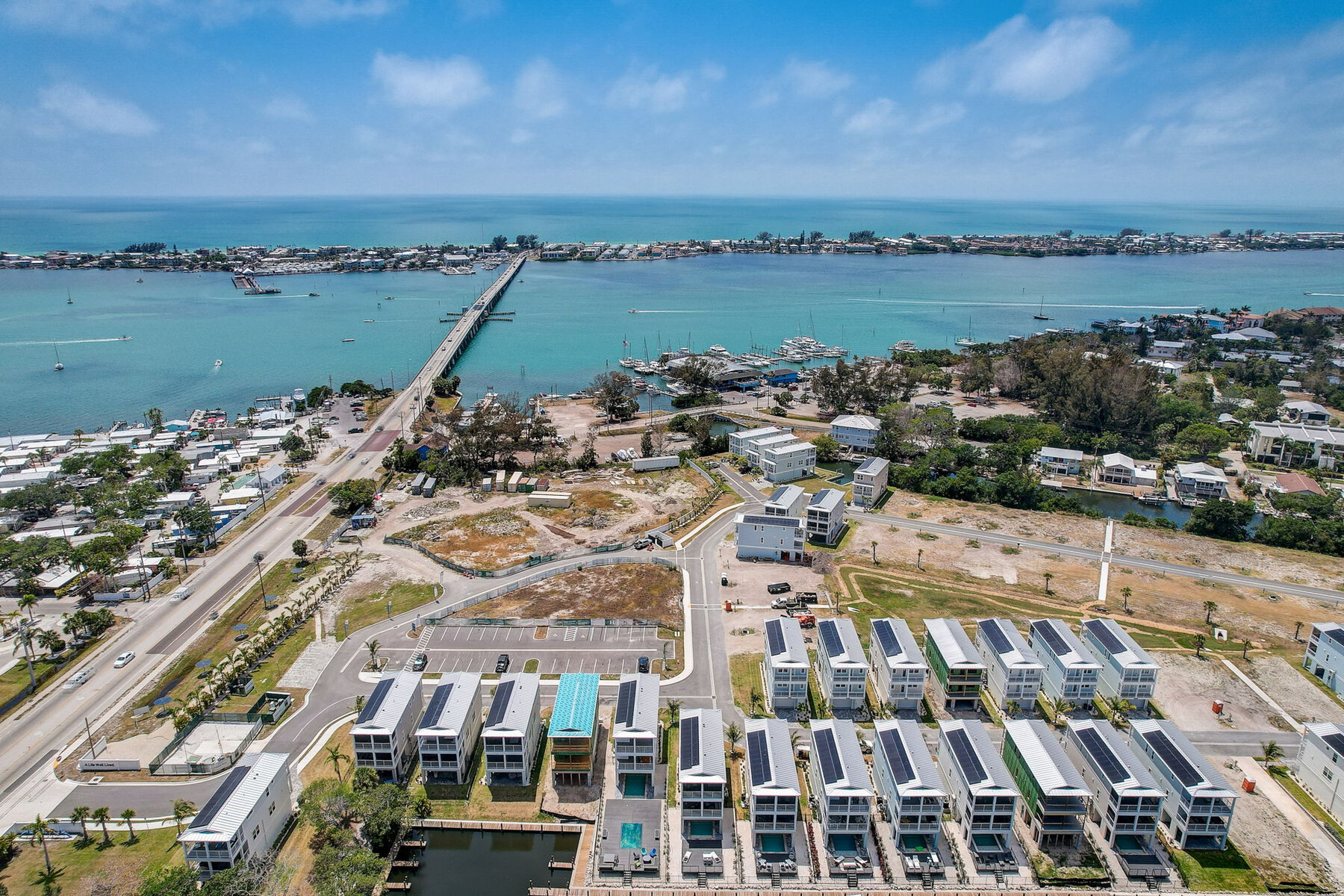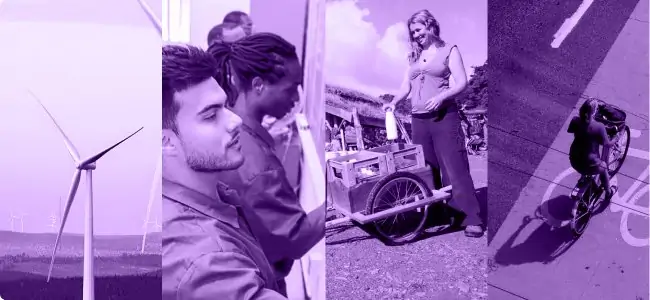

Our Electrifying World is a series about how electrification is creating a more sustainable energy transition. It is sponsored by Rewiring America.
Susan Manners and her partner were looking to move to Vermont to be closer to their kids when they stumbled upon a chance to buy a townhouse in a new development in the northwestern city of South Burlington. The view — a vista of the Green Mountain range — was a huge selling point, Manners recalls. But they were primarily drawn to the new-build home for how it is powered: solar panels on the roof, a battery wall in the basement, and no natural gas hookup to be found. And the same is true for all of their neighbors.
“The zero-carbon was a big driver,” Manners says. “We’re really concerned about climate change.”
“You’re closer to the energy that you’re using,” says Evan Langfeldt, CEO of O’Brien Brothers, the construction firm developing Manners’s neighborhood.
About 20 percent of greenhouse gas emissions in the U.S. come from household energy use, including heating, cooling, cooking and otherwise powering a home. That makes housing a major target for addressing climate change, explains Wangda Zuo, a Pennsylvania State University researcher who has studied net zero neighborhoods, including one of the first in the U.S. on Florida’s Ana Maria Island.
“If we are able to reduce building energy consumption, we can significantly reduce the CO2 emissions,” Zuo says.
In recent decades, updated building codes have generally led new-build homes to become more energy efficient, according to Zuo. But projects like Hillside East are going a step further by incorporating solar panels and other electric technologies, and cutting out gas completely.

“Modern equipment is much better, but the fact of the matter is, if you’re using natural gas, you’re still creating carbon emissions,” says Langfeldt, who spearheaded the plan to make Hillside East carbon-free. “I think we all just need to do our part.”
O’Brien Brothers had previously explored options to incorporate solar panels into its housing developments, but the extra expense to homebuyers had been a hurdle. So when the firm began the plans for Hillside East, Langfeldt and his team started collaborating with Green Mountain Power, Vermont’s largest electric utility, and a pioneer of using residential solar panels and battery storage to bolster the local grid.
Weighed down by negative news?
Our smart, bright, weekly newsletter is the uplift you’ve been looking for.The developer and utility devised a plan. Green Mountain Power would own all the electrification technology in each of the neighborhood’s homes: the solar panels on the roof that generate electricity and battery walls in the basement that store it; heat pumps that warm and cool the space; electric vehicle chargers that power up cars in the garage. Each homeowner would then pay a “resiliency fee” to essentially lease the equipment, starting at $75 per month for a townhouse. This cuts the cost for buyers, keeping the homes on par with the local housing market, explains Langfeldt. Prices for the smallest homes start at $599,000, ranging up to more than $1 million for the largest. (Eight units in the development are reserved as permanently affordable housing, selling for about $320,000.)
Green Mountain Power has been kitting out Vermont homes with this range of technology for years, says the utility’s vice president of strategic and external affairs Kristin Carlson, but this was a new opportunity. “What this does is bring them all together from the ground up,” Carlson explains.
During peak times — like hot days when many people fire up their air conditioners — Green Mountain Power can draw on those in-home batteries to meet the higher electricity demand, rather than having to purchase higher-cost energy from the regional grid.
“What we essentially built at O’Brien was a virtual power plant where we can leverage the energy storage in those homes to flow both ways to benefit all our customers,” Carlson says. “That neighborhood itself is a battery.”
For Manners, living in the new townhouse hasn’t been noticeably different from her previous home in Pennsylvania. She estimates the energy costs are about on par — except instead of being spread out, everything, including fuel for an electric car, is entirely paid for on the same electricity bill.
The area hasn’t had any power outages since Manners moved in last October, but she says it’s nice to know that the electricity will stay on if there is a cut.

“It’s got great benefits,” she says. “And it’s not going to be, on a day-to-day basis, really any different from any other house.”
The resiliency of fully electrified neighborhoods is proving to be a selling point in itself. Florida developer Pearl Homes started developing a model home about eight years ago with the goal of making it as sustainable as possible, recalls president and founder Marshall Gobuty. The company was the first to get a LEED Net Zero certification, an energy standard set by the U.S. Green Building Council, for a residential development.
In Hunters Point, a Pearl Homes development on the Gulf of Mexico about 50 miles south of Tampa, houses are powered through the day by solar panels on their roofs, which also charge up in-house batteries that keep the electricity flowing overnight. So far, 30 of a planned 86 homes are built and occupied.
“We built the home with resilience in mind,” Gobuty says of the Hunters Point model. “But we didn’t think it was going to be at the forefront like it is right now.”
A growing number of housing developments are embracing a carbon-free model, according to Rocky Mountain Institute researchers Brett Webster and Lucas Toffoli. While mitigating climate change may be a primary selling point for some, many homebuyers are drawn by the other benefits sustainable homes offer. Better insulation not only improves energy efficiency, Webster notes, it also improves temperature control and minimizes outside noise.
A major benefit of this approach, Toffoli says, is that it is cheaper and easier to install these greener technologies when the home is built — rather than later as retrofits. “The right time to do something better is as early as possible,” Toffoli says. “I think it’s something that’s being demonstrated by some of these neighborhoods.”
To be successful, Zuo says, each project must find the right technology for local conditions. A house in hot and sunny Florida has different needs than one in colder, grayer Vermont.

The utility is a big factor too, according to Zuo. Some power companies will reimburse customers who feed solar power into the grid; others won’t accept any residential solar at all. This was a challenge at Hunters Point, where developers had hoped, without success, to exchange the solar energy the homes feed into the grid for a credit from the local utility that could go toward lowering homeowners’ association fees. The receptiveness of the utility can impact costs that may make a housing option less attractive to some potential homebuyers, Zuo explains.
And the general cost of new all-electric homes remains a significant hurdle. Most projects so far tend to be high end, says Zuo. “How can we reduce this cost so that the net zero energy community can be really applied for normal people, without paying a green premium?” he asks.
Meanwhile, projects are already under way that aim to make greener energy homes more accessible. Gobuty’s firm in Florida is working on two new projects targeting the workforce market. In Vermont, O’Brien Brothers is already applying the zero-carbon approach on one nearby project, and is exploring how to adapt it to another potential development in a different part of the state that would have a lower price point.
Carlson, of Green Mountain Power, says the utility has had conversations with other possible housing projects around the state about replicating the approach.
“This is the first neighborhood,” she says, “and there will be more.”
The first two sets of scrolling images appear courtesy of O’Brien Farm. The final set appears courtesy of Pearl Homes.


